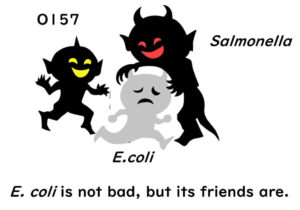In this article, I would like to talk to you about yeast and mold, two important microorganisms in food microbiology that are distinct from bacteria. While they are more complex than prokaryotic bacteria, both yeast and mold have reached an evolutionary dead end. Despite being heterotrophic, they have formed cell walls similar to those of plants, which hindered their development into more animal-like organisms. In this presentation, I will also discuss the positioning and significance of yeast and mold in the context of food microbiology.
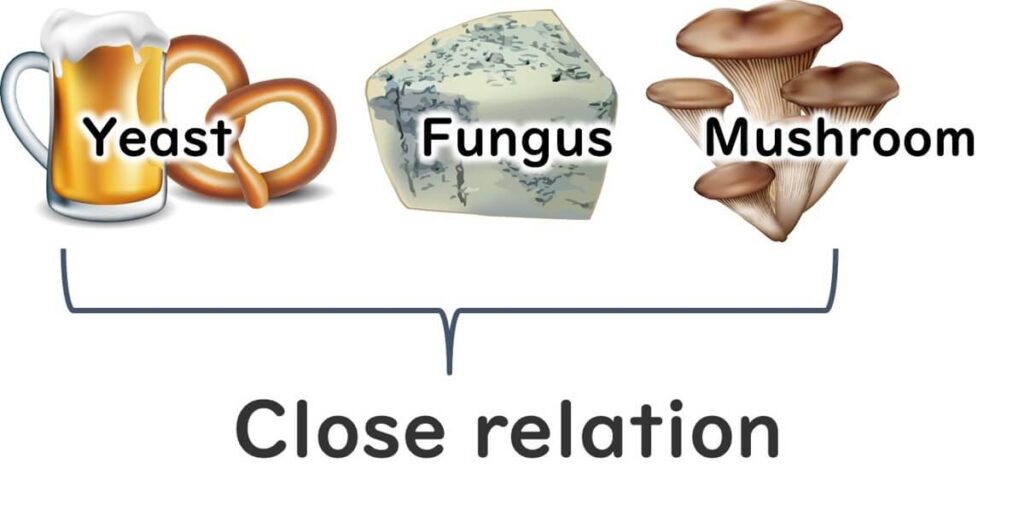
Biological position of moulds and yeasts
Yeast, fungi, and mushrooms all belong to a group of organisms that diverged from a common ancestor in terms of evolution. They are all eukaryotes, meaning they have nuclei within their cells and possess more complex cellular structures than prokaryotic bacteria. Eukaryotes are believed to have originated from a mosaic combination of prokaryotic organisms, making them larger in size compared to prokaryotes.

Yeast, being single-celled, maintained their unicellular lifestyle during the evolutionary transition from single-celled to multicellular organisms in eukaryotes. On the other hand, fungi are considered to be a group of organisms that evolved from yeast through the development to multicellular. Mushrooms, being part of fungi, are organisms that emerged through the process of multicellular evolution and are capable of forming unique structures called fruiting bodies.

The first life forms that appeared on Earth were prokaryotes. Over time, they evolved into eukaryotes. Among eukaryotes, those that formed a symbiotic relationship with cyanobacteria evolved into plant plankton. Eukaryotic cells that acquired photosynthetic capabilities developed thick cell walls outside their cell membranes to protect themselves from various stresses. These eukaryotic cells eventually evolved into higher plants as we know them today.

Yeast and Mold: Evolutionary Dead Ends
Now, let's consider the advantages and disadvantages of having a cell wall or not. Having a cell wall means increased resistance to external stress. However, it also prevents the cell from performing phagocytosis, such as inverting the cell membrane to engulf solid particles from the outside. From a nutritional perspective, this loss of phagocytic ability means a loss of proactiveness. On the other hand, cells without cell walls can perform phagocytosis, making them active and dynamic in terms of nutrient intake. However, they are weaker against external stress due to the absence of a cell wall.
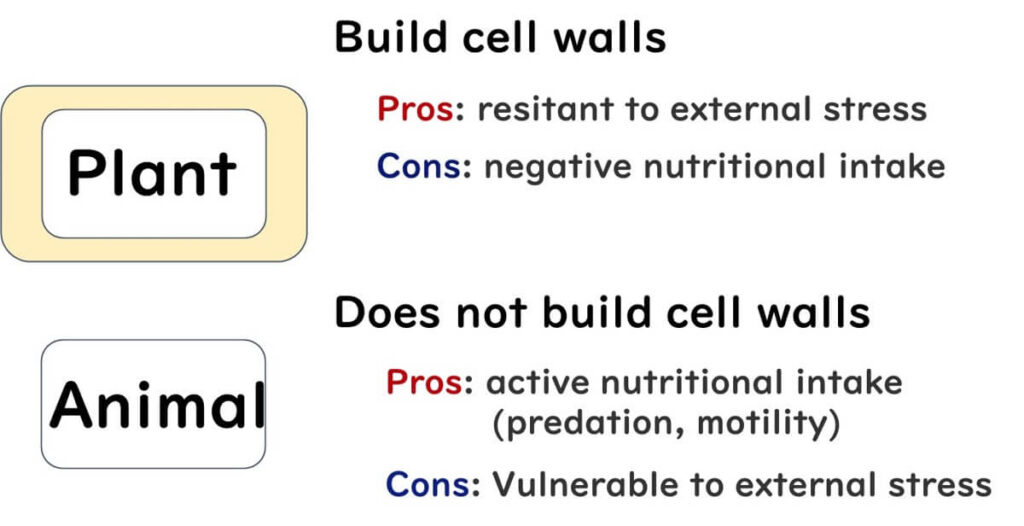
Cells that couldn't establish a symbiotic relationship with cyanobacteria were unable to generate energy from sunlight. Therefore, these cells had no choice but to prey on other cells for sustenance. As a result, they didn't develop cell walls. Despite being vulnerable to stress, they maintained an active mechanism for nutrient intake. This kind of organism eventually evolved into animals.
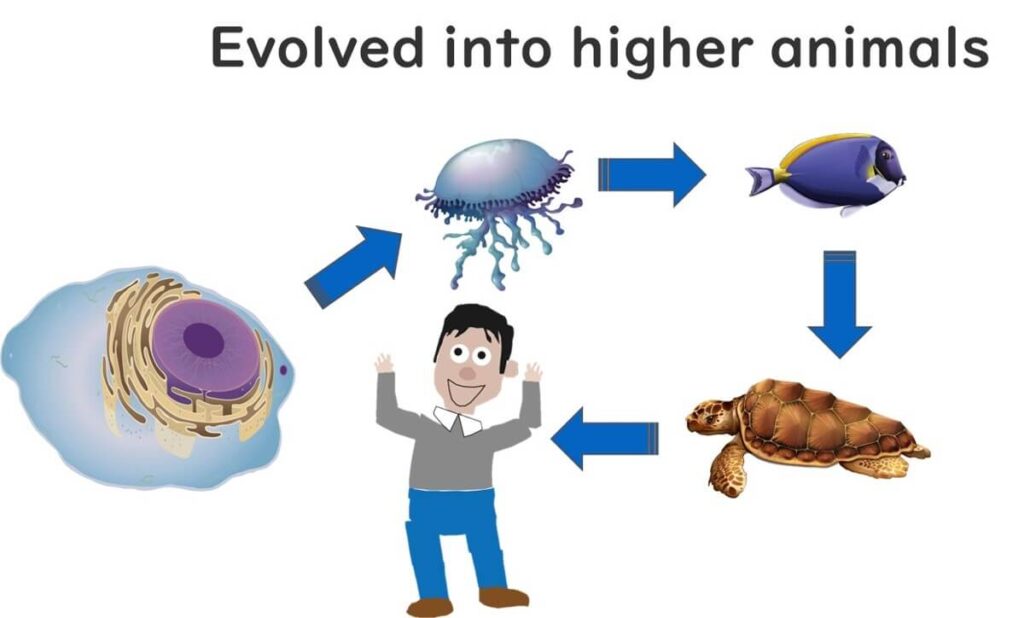
Now, let's focus on mold and yeast. The ancestors of mold and yeast cells were also unable to establish a symbiotic relationship with cyanobacteria, similar to the ancestors of animals. However, their subsequent evolution took different paths. Protozoa, which are ancestors of humans, couldn't utilize light energy. Consequently, they evolved as heterotrophic organisms, actively consuming others while maintaining the fluidity of their cell surface. On the other hand, the ancestors of mold and yeast cells chose to form cell walls, similar to plants. Consequently, mold and yeast were unable to undergo the remarkable evolution seen in animals.
When you visit the vegetable section of a supermarket, you'll find mushrooms, which are an evolved form of mold and yeast. From a nutritional perspective, both humans and mushrooms are heterotrophic organisms. While animals chose an active and progressive path by not forming cell walls, yeast, mold, and mushrooms have chosen a passive path.

These groups of organisms can be considered as being stuck in an evolutionary dead end.
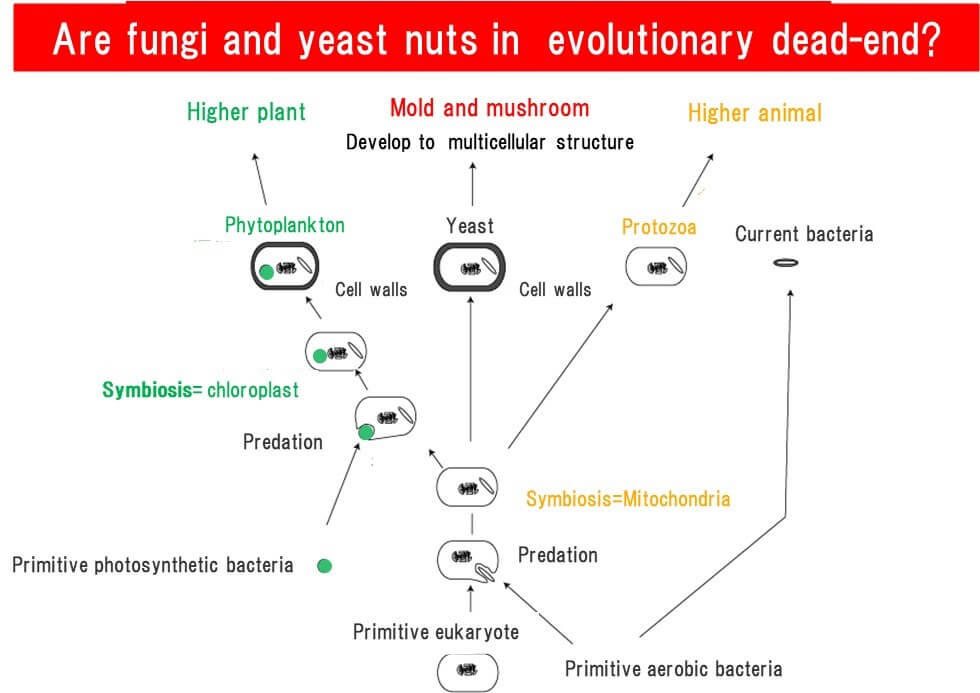
Differences between moulds and bacteria in terms of food microbiology
Next, in terms of food microbiology, let's discuss the differences between mold and bacteria.
In the case of mold, it does not typically cause toxin-mediated or infectious food poisoning. Mold is primarily important in food microbiology due to the deterioration of products resulting from its appearance. However, there are exceptions where certain molds can pose health risks. For example, one representative toxin produced by a type of mold called Aspergillus flavus is aflatoxin, a potent carcinogen. Another toxin is deoxynivalenol produced by a species of red mold called Fusarium. The third toxin is patulin produced by a species of blue mold called Penicillium expansum. These three toxins have specific regulatory limits.
Regarding yeast, it also does not cause toxin-mediated or infectious food poisoning. Furthermore, unlike mold, there are no known harmful yeast species. Therefore, from the perspective of food safety and quality management, yeast can be considered solely involved in food spoilage.

How to prevent mould growth in food
Next, let's discuss methods to prevent mold growth in food.
One significant characteristic of mold is its ability to grow even in dry food. While bacteria can hardly grow in dry foods such as bread, mold can still thrive. Additionally, it is important to note that vacuum packaging can effectively suppress mold growth in most cases. This is because the majority of molds are aerobic organisms. The fact that molds (1) can grow in dry food and (2) cannot grow in the absence of oxygen is an important feature that distinguishes molds from bacteria.
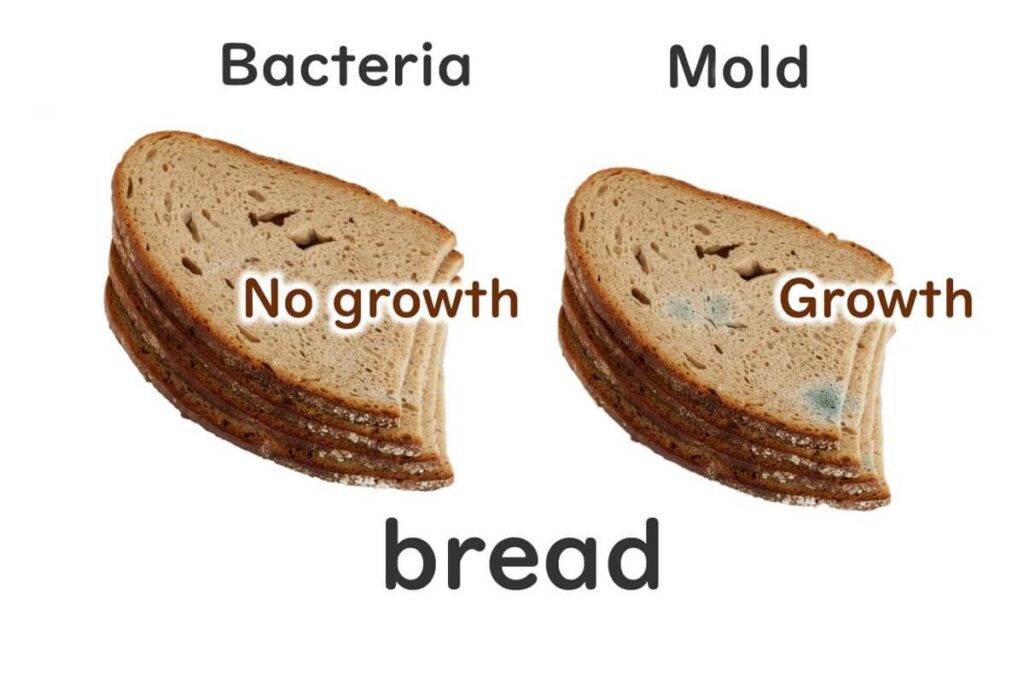

Why do molds possess these physiological traits? These characteristics are closely related to the lifestyle of molds. Molds disperse themselves by releasing numerous spores into the air, similar to dandelions. This is their dispersal strategy. Since molds inhabit surfaces such as plants and soil, their environment generally provides an abundance of oxygen. Therefore, most molds are considered aerobic. Moreover, since molds reside on surfaces, they are constantly exposed to the risk of drying out. As a result, molds have developed resilience to dry conditions.
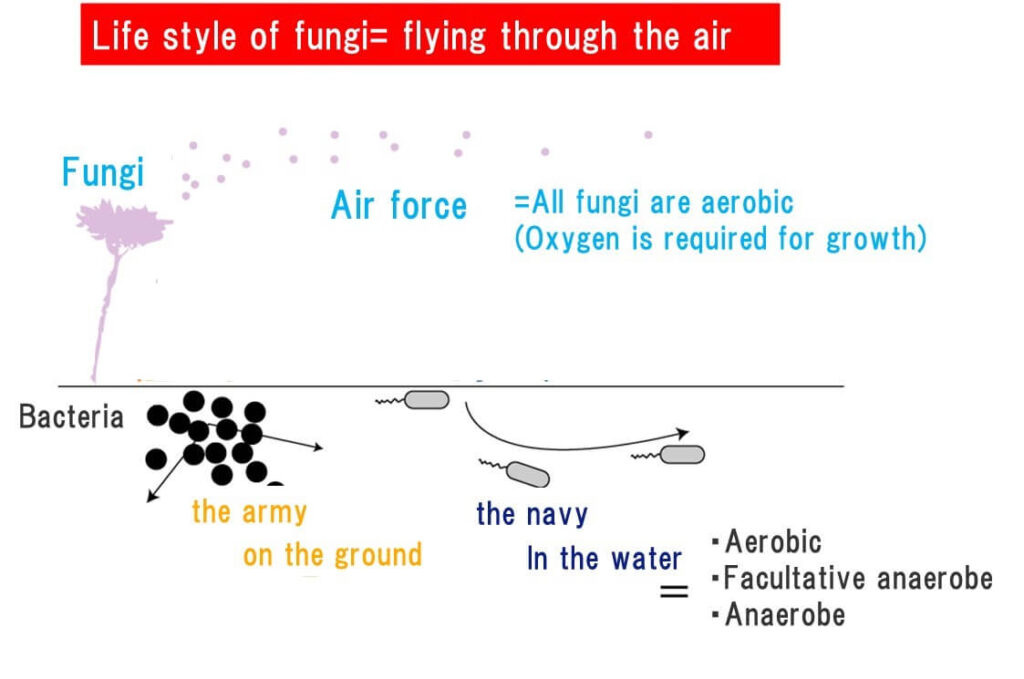
What happens to the spores of molds that are released into the air? For instance, if mold spores fall onto a nutrient-free surface such as a dry table, they will eventually die off. Spores germinate at the point of landing and extend hyphae, but if no nutrients are present, the secreted enzymes will remain ineffective, and the hyphae will perish.

However, if, for example, plant debris or animal carcasses are nearby, the secreted enzymes will break down the decaying matter. As a result, small molecules such as glucose and amino acids will diffuse out from the decomposed matter. The hyphae detect this signal and grow toward the direction of the diffusing nutrients. This is the survival strategy of mold spores when they land on a specific point.
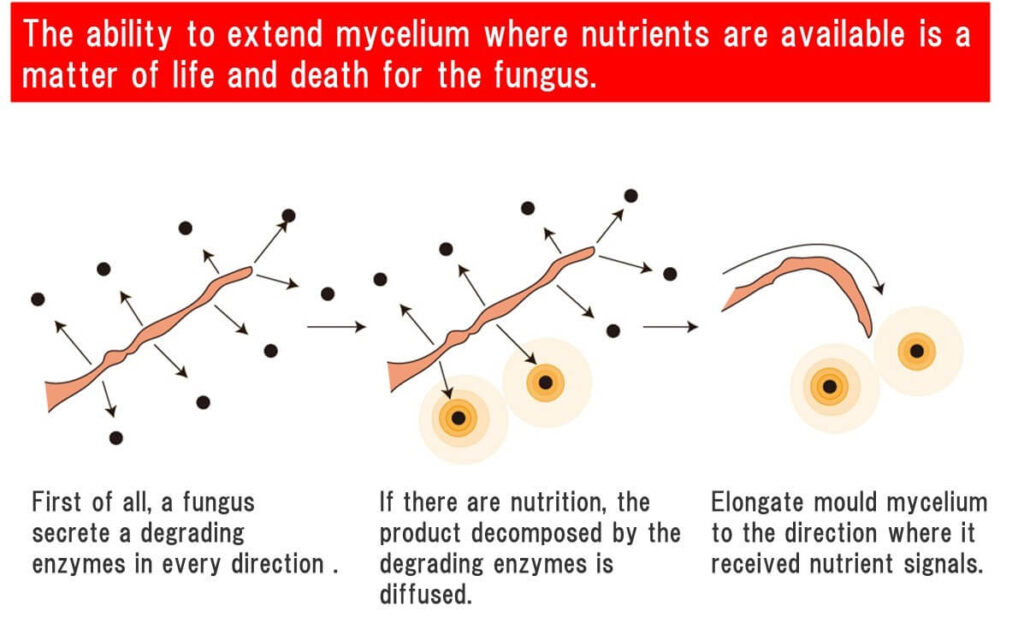
By the way, In the case of wine, alcohol is formed in a single step, in which the glucose contained in the grapes is fermented by yeast.

On the other hands, in the production of alcoholic beverages like sake, the first step is to cultivate a type of mold called Aspergillus oryzae on rice. This mold breaks down starch into glucose. Subsequently, yeast ferments the glucose to produce sake. Textbooks on fermentation microbiology often mention this process. The reason is that, as mentioned earlier, the ability to secrete enzymes that break down high molecular compounds is essential for the survival of mold hyphae in the first place.

In conclusion, yeasts and moulds have chosen a passive path, unlike animals, due to an evolutionary dead end. Moulds and yeasts, with rare exceptions, do not cause foodborne infections like bacteria, but play an important role in food microbiology by exclusively causing the deterioration of food products. Understanding the differences and characteristics of these micro-organisms is useful for food safety management.

